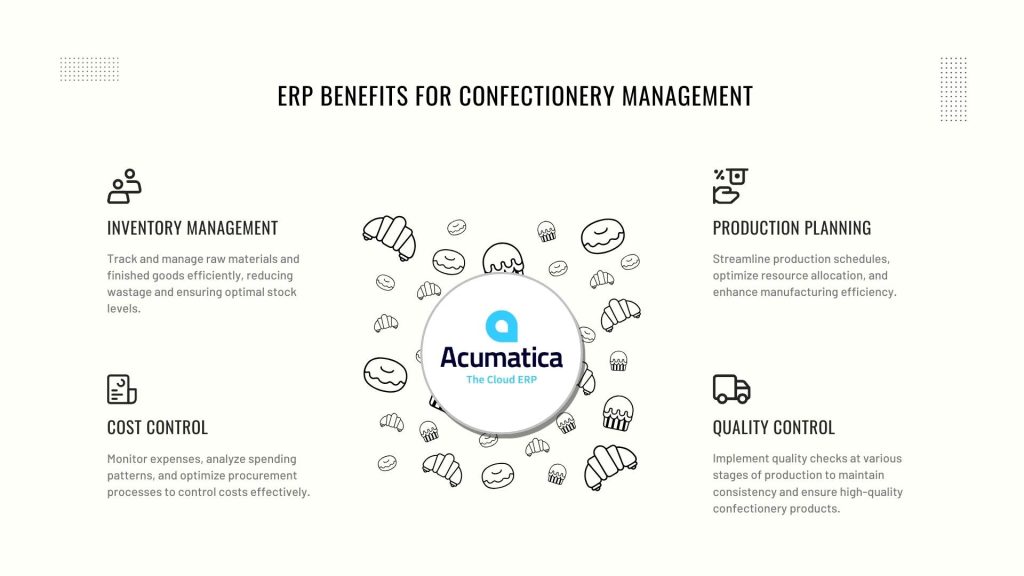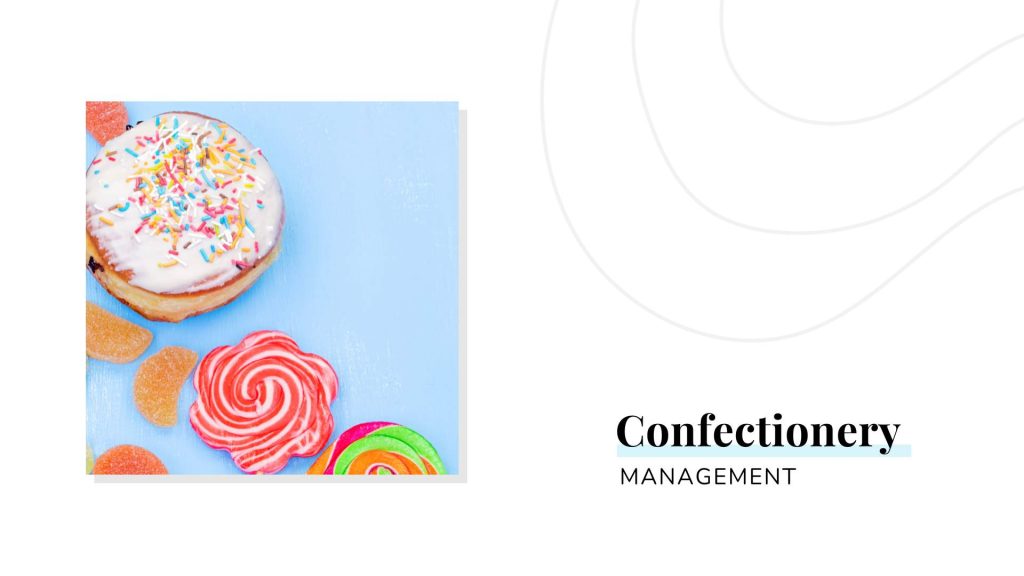The confectionery business is a vibrant and ever-evolving sector focused on producing and distributing sweet treats, encompassing a diverse range of products from chocolates and candies to chewing gum and pastries. Renowned for its ability to indulge consumers’ cravings for sweetness and delight, this industry is deeply intertwined with cultural celebrations, gifting traditions, and moments of indulgence worldwide.
It operates within a highly competitive market where innovation, taste preferences, and changing consumer demands drive product development and marketing strategies.
This industry’s key players include multinational corporations, artisanal producers, and smaller local businesses, each contributing to a landscape characterized by creativity, technological advancements, and a constant quest for novel flavors and textures.
Factors such as health-conscious consumer trends, sustainability concerns, and evolving dietary preferences have prompted shifts in product formulations, leading to the development of healthier or more natural alternatives while maintaining the allure of the indulgent experience.
Overall, the confectionery industry remains a cornerstone of the global food market, continuously adapting to meet the desires and needs of consumers while navigating changing market dynamics and societal expectations.
Challenges Faced by the Confectionery Industry
Health and Wellness Concerns: With increasing awareness about health and wellness, there’s a growing demand for healthier food options. The confectionery industry faces challenges in adapting to these consumer preferences while maintaining the indulgence associated with their products.
Regulatory Changes: Food ingredients, labeling, and advertising regulations constantly evolve. Meeting these changing regulatory standards and ensuring compliance can be challenging for confectionery companies, especially when reformulating recipes or altering packaging.
Supply Chain Disruptions: Fluctuations in raw material costs, availability, and transportation issues can significantly impact the confectionery industry. Disruptions in the supply due to weather or global crises can affect production and distribution.
Competition and Innovation: There’s intense competition in the confectionery market. Companies must continuously innovate to create new flavors, products, or packaging to stay relevant and capture consumer interest, all while balancing cost considerations.
Sustainability and Ethical Sourcing: Consumer demand for ethically sourced ingredients and sustainable practices has increased. Confectionery companies face challenges in sourcing raw materials responsibly, reducing packaging waste, and adopting eco-friendly practices throughout their supply chains while ensuring cost-effectiveness.
Future Trends of Confectionery Business
The confectionery industry is always evolving, and here are five potential future trends:
Healthier Alternatives: With increasing health consciousness, there’s a growing demand for healthier confectionery options. It includes products with reduced sugar content, natural sweeteners, functional ingredients like probiotics or vitamins, and snacks that cater to specific dietary needs (gluten-free, keto-friendly, etc.).
Sustainable Packaging: Consumers are evolving to be more environmentally conscious, which extends to packaging. Future trends may see the confectionery industry adopting eco-friendly packaging materials like biodegradable plastics, compostable packaging, or even edible wrappers to reduce waste and environmental impact.
Personalization and Customization: Customization is a huge trend across various industries, and confectionery is no exception. Companies might offer personalized chocolates, candies, or packaging to cater to individual tastes or for special occasions, leveraging technology like 3D printing or online customization tools.
Innovative Flavors and Ingredients: Consumers are increasingly adventurous with their food choices, encouraging the confectionery industry to experiment with unique flavors and ingredients. Future trends could involve exotic spices, unconventional fruit combinations, or savory-sweet fusions to capture diverse tastes.
E-commerce and D2C Sales: Online shopping continues to rise, and the confectionery industry will likely adapt by enhancing its online presence. Direct-to-consumer (D2C) sales, subscription boxes, and online-exclusive products might become more prevalent, offering convenience and accessibility to a wider audience.
Features of ERP for confectionery management
ERP can offer several tailored features for managing confectionery businesses. Here are three key features specific to confectionery management within an ERP:
Batch Tracking and Traceability: Confectionery involves handling various ingredients and multiple batches. ERP systems for this industry offer batch-tracking functionalities, enabling businesses to trace ingredients from procurement to production and packaging.
It ensures compliance with quality standards, allows for quick identification and recall of products if necessary, and helps maintain consistency in the final products.
Recipe and Formulation Management: Confectionery production relies heavily on precise recipes and formulations. An ERP confectionery management system typically includes recipe management tools, allowing companies to create, modify, and store recipes centrally. These systems often calculate ingredient quantities, manage variations, and provide detailed instructions for production. They can also integrate with inventory management to ensure accurate stock levels of ingredients required for different recipes.
Quality Control and Compliance: Maintaining quality standards is crucial in the confectionery industry. ERP systems incorporate quality control features to monitor and manage various aspects of production, including product testing, compliance with industry regulations, and adherence to quality assurance protocols.
These systems often include real-time monitoring tools, automated quality checks, and documentation functionalities to ensure consistency and meet regulatory requirements.

Benefits of Acumatica ERP for Confectionery
Certainly! Acumatica ERP offers several advantages for confectionery businesses:
- Inventory Management: Streamlines tracking and managing raw materials, ensuring efficient production and minimizing wastage in confectionery manufacturing.
- Real-time Financial Insights: Provides accurate financial data, enabling better decision-making and cost control in confectionery production and sales.
- Scalability: Adaptable to the growth of confectionery businesses, allowing for seamless expansion without major system overhauls.
- Compliance & Regulation: Helps in adhering to industry-specific regulations. And standards, crucial in the food manufacturing sector, ensuring product quality and safety.
- Enhanced Customer Service: Improves customer experience by optimizing order processing delivery. And managing customer relationships efficiently, increasing customer satisfaction and loyalty in confectionery businesses.
Conclusion
Acumatica Cloud ERP presents a transformative solution for confectionery business, revolutionizing operations and enabling unparalleled growth. Through its adaptable and scalable platform. Acumatica streamlines inventory management, ensuring precise tracking of ingredients and finished products, optimizing production processes, and reducing waste. Its real-time analytics empower decision-making by providing comprehensive insights into sales trends, customer preferences, and production efficiency, facilitating informed marketing and product development strategies.
The flexibility of Acumatica enables seamless integration with other applications, fostering a cohesive ecosystem that enhances collaboration among departments and suppliers. With its robust financial management tools, Acumatica ensures fiscal transparency and efficiency, empowering confectionery businesses to focus on innovation, quality, and customer satisfaction while driving sustained success in an ever-evolving market landscape.

Vijay comes with a vast experience in ERP and enterprise solutions space with about 20 years of experience in various packaged application like Acumatica, SAP, Orion, Salesforce.com, SugarCRM and, SalesLogix.

